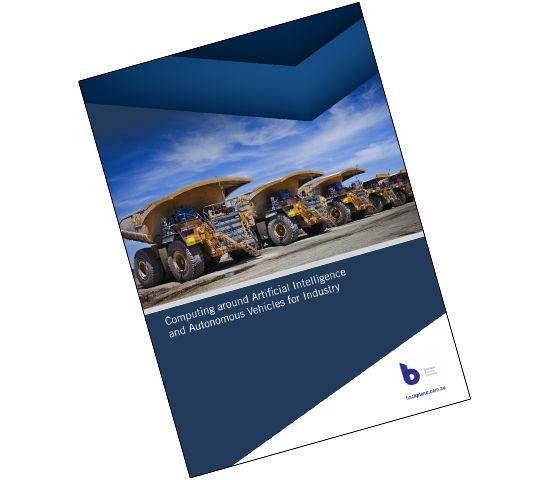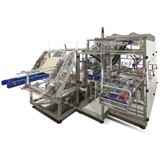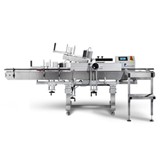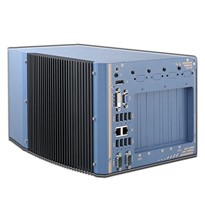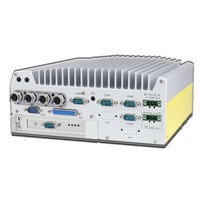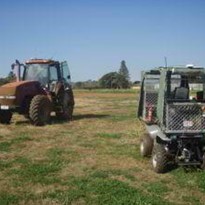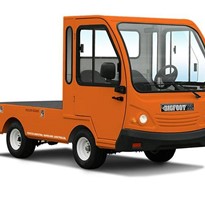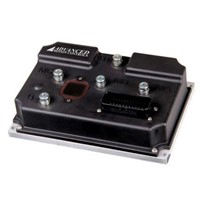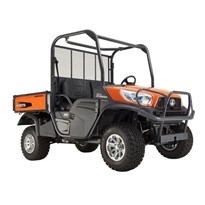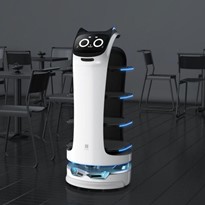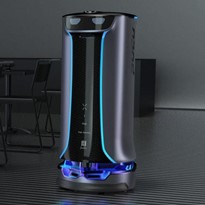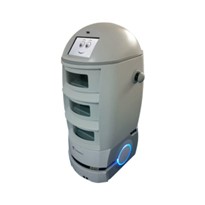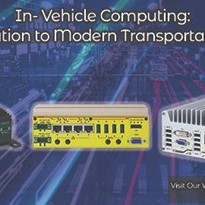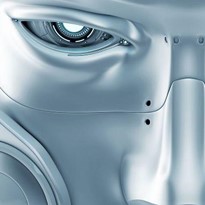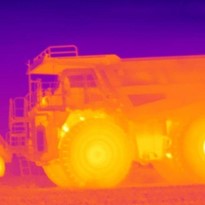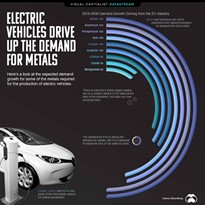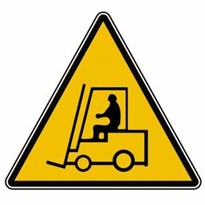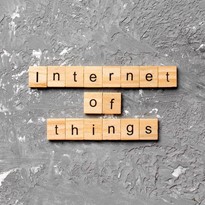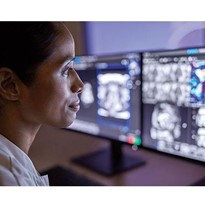Introduction
There have been significant advances in the realm of artificial intelligence (AI) and autonomous vehicles in industry, with segments such as the mining and resources sector pioneering the implementation of this technology in Australia. Driving these developments is the computing systems that enable autonomous platforms and AI to operate effectively and securely. This white paper discusses the technology in context of its global growth and Australian adoption. It provides insights into the features that enable the success of in-vehicle computing systems in harsh environments, along with examples of why and how these systems are best suited to various industry, defence and emergency services applications.
Accelerated growth in autonomous vehicles
Gartner identified autonomous vehicles (as part of ‘autonomous things’) as one of the top strategic technology trends that businesses should explore in 20201. Interestingly, that prediction was made towards the end of 2019, before the coronavirus pandemic. In a COVID-19 2020 this became particularly prescient, with many industries accelerating their deployment of ‘autonomous things’ to keep operations running in the absence of workers.
While mining companies had begun utilising automated vehicles in Australia before the coronavirus wave, the epidemic spurred an extra uptake. Australian Mining magazine reported in April 2020 that Rio Tinto had made one-third of its haul truck fleet autonomous in the Pilbara region, whilst BHP had planned to deploy 20 autonomous trucks to its Newman East iron ore mine by the end of 20202.
The accelerated growth of the autonomous vehicle market was acknowledged in an industry report by Allied Market Research in 2019, which valued it at US$54.23b in 2019 and projected its value to reach over 10 times that by 2026. The report cited improved safety and environmental sustainability as key motivating factors for the adoption of autonomous vehicles3. In a different report, Gartner forecast that by 2023, the global net additions of vehicles equipped with hardware that could enable full autonomy would reach 745,705 units – more than double the number of units in 2019 (332,932)4.
Making sense of Autonomous Things’ and autonomous driving
An Autonomous Thing (AuT) is a device that can work autonomously on specific tasks without human direction or interaction. The capabilities of these devices are only made possible through AI algorithms. Defined in simple terms, AI is the automation of tasks normally requiring human intelligence. AuT devices include drones, vehicles and robotics, as well as smart home devices and autonomous software. The commonality with these devices is that they have advanced AI and machine learning capabilities. Unlike most current ‘smart’ devices that can connect to the Internet and automate a series of pre- defined tasks, the future generation of AuT will be able to think and act by themselves5.
One of the key application areas of AI is autonomous driving. Autonomous vehicles are equipped with multiple sensors as well as cameras, radars and lidar, which collect vast amounts of data on the surroundings. These enable the vehicles to obtain human-like sensory information on the environment. In order to process this data instantly, the autonomous vehicles must have supercomputer capabilities that can communicate this information to an autonomous driving platform. They then rely heavily on the AI in the form of machine learning and deep learning to process that data and make accurate driving decisions.6
Key drivers for industrial mobility
Deploying AuT to automate the transportation of goods has been coined as ‘industrial mobility’. It covers a wide swath of transportation applications including autonomous trucking, drones, rail, and marine transport. In order to remain competitive in any industrial setting, Australian businesses are encouraged to invest in new-generation automation to reduce the costs of production and meet occupational health and safety codes7,8.
The key motivators for companies to adopt AI-driven automation are costs, productivity and safety. Employment of AuT can reduce costs associated with labour and energy usage. AuT devices are also more efficient in terms of productivity, because they eliminate human error or inconsistencies in behaviour that can translate to inefficiency. It is worth noting that human error in driving is responsible for thousands of preventable deaths each year, and this statistic can be drastically reduced by autonomous vehicles9.
The Australian mining experience with autonomous vehicles
The mining sector in Australia has been progressive in its adoption of autonomous vehicles, namely in the self-driving mine haul trucks. For example, Rio Tinto first started trials of an autonomous haul truck fleet in 2008. Since then, the company has moved more than one billion tonnes of ore and waste material across the Pilbara. In 2019, the Rio Tinto autonomous fleet accounted for a quarter of the total material moved across the company’s Pilbara mines. Moreover, the company reported that each autonomous truck was estimated to have operated 700 hours longer than conventional haul trucks and achieved this with 15 per cent lower load and haul unit costs10.
Mining giant BHP also attributes automation to increased productivity, more efficient and safer operations by keeping workers out of harm’s way. This extends to their autonomous vehicles. According to BHP Chief Technology Officer, Diane Jurgens, the Haulage Automation at the BHP Jimblebar operation in the Pilbara has reduced heavy vehicle safety accidents by 80 per cent. At the BAML SmartMine conference in 2019, Ms Jurgens said BHP was looking to accelerate truck autonomy across its Australia sites as a result of these benefits11.
Environmental challenges surrounding in-vehicle computing in industry
While there have been rapid strides in the hardware technology that can support autonomous platforms and AI, there are a number of environmental challenges for computing technology in an industrial context. Computing hardware has to be specially designed to operate reliably within harsh conditions. Key challenges in sectors such as mining, defence, transport and logistics include strong vibrations and shock, extreme temperatures and wet or dusty conditions.
Australian-owned and operated company, Backplane Systems Technology (BST), has been supplying rugged PC computing technology to the Australian market – including the mining and emergency services sectors – for 31 years. As CEO Kristy Comb explained to Manufacturers’ Monthly, their hardware products have been proven to work reliably in the Pilbara heat and dusty conditions; a testament to their hardiness. Importantly, these in-vehicle computers must be able to work under constant vibration and are fanless so that none of the dust or grit from the outside environment can get inside and compromise the system.
“In Australia, we’re looking at high temperatures in many regional areas. For example, if the PC is in the Pilbara, in a truck cabin on a 50°C day, the PC in the cabin is going to be hotter than that – it needs to be able to start at 60 or 70°C. A desktop PC, as a comparison, is only rated to about 30 to 35°C.”12
However, it’s not just the climate or environmental conditions that pose a challenge for in-vehicle computing in terms of the hardware’s ‘rugged’ reliability. Communications can be compromised due to the remote location of a vehicle. Likewise, power outages or interrupted supply will affect how a computer processes and communicates information.
According to Ms Comb, the BST new generation computing technology from manufacturer Neousys Technology addresses these challenges with features that improve communications and functionality.
Leading global technology, fully supported locally
BST is the Australian authorised channel partner for Neousys Technology, which is recognised as a world-leading provider of rugged embedded systems. As such, they are the Australian supplier of Neousys’ pioneering range including the new generation GC series and in-vehicle PCs. These are state-of-the-art hardware systems used in conjunction with autonomous platforms and AI. They also have the latest generation CPU (central processing unit) support and the hardware is available and supported locally through BST for between 10 to 15 years, as per Intel’s long-life road map13.
The GC series are ruggedized GPU (graphic processing units) computing edge AI platforms that support high-end graphics cards. These include the Nuvo-7166GC and Nuvo-8108GC. The latter is the successor to the Nuvo-6108 – the first industrial GPU platform –and is being implemented in one of the world’s largest autonomous driving projects, the Baidu Apollo 2.014, 15.
Meanwhile, the new generation in-vehicle computing VTC Series include features such as built-in ignition power control, CAN bus port, E-Mark, EN 50155 railway certification, and shock and vibration damping brackets.
Ms Comb points out that the hardware is fit for purpose in a number of industrial applications including road and rail transportation, shipping, mining, emergency services, and defence. Importantly, the Neousys platforms are entirely scalable.
“For example, if you look at the Nuvo-7000 series. All up, there are over 21 different models in this series but they are all based on the same motherboard design; just some models have added features like PoE (Power over Ethernet), a super capacitor module or a GPU. This means you can standardise your system on one particular series and expand it for multiple applications whether it be an in-vehicle solution or high end GPU compute solution,” Ms Comb explains. “Since they are all based on the same motherboard design, this enables you to develop one system image that can then be rolled out across all your devices, and you only add in certain functions as needed. This reduces cost and time, especially when you are deploying systems on a large scale.”
Moreover, all the Neousys systems have a large range of additional peripherals that can be added into a system. This includes 4G and WIFI modules for communications, GPS modules for tracking, PCIe cards for additional PoE Ports and even small form factor GPU solutions that work from a mini-PCIe slot on the motherboard.
“With all these features and their rugged design, Neousys systems are truly a system designed for all applications.”
Neousys design features address industrial pain points
According to Mr Chris Ni, Chief Technology Officer for Neousys Tecnology in Taiwan, the manufacturer’s hardware products have been designed to specifically address industrial pain points: “They offer exceptional user experience and are of practical value. Product development is based on customer pain points. From research and development to manufacturing, it is customer-oriented every step of the way.”
To expand on his point, Mr Ni highlighted some specific design features that Neousys have developed to enhance their hardware offering for rugged GPU edge and in-vehicle computing. These include:
Patented Cassette Design
GPU consumes high wattages and is a high heat-dissipating component. In traditional PCs, the heat generated by the GPU will circulate internally without efficient heat dispersion, which will affect system stability when operating in high- temperature environments. The Neousys patented cassette design solves this by creating a separate compartment for the graphics card. It also features a wind tunnel design that draws in external air to cool add-on cards passively or actively with a fan. This ensures the system’s long-term stability and reliability, even in extreme temperatures (-40 to 70°C).
DC/ SC Power Supply Design
The Neousys’ systems feature wide-range DC/DC inputs that are exceptionally stable with high-efficiency power conversion rates. This guarantees steady power delivery for various in- vehicle application deployments.
Intelligent Ignition Control
User definable power-on and power-off ignition timing control to avoid power surges during vehicle startups and unforeseen low-battery detection shutdowns.
Patented Damping Bracket
Neousys patented damping bracket is shock and vibration proof and MIL-STD-810G certified, ensuring operation in three-axis conditions, and up to three GRMS in-vehicle applications.
AI AND AUTONOMOUS VEHICLES IN DEFENCE: PRAESIDIUM GLOBAL CASE STUDY
AI is poised to play a particular role in the defence sector, and according to the Australian Institute of Machine Learning, Australia is well-positioned to grow as a supplier of AI-based systems to the global defence market16.
David Baird, who is CEO and founder of Australian company Praesidium Global, had the foresight to develop an unmanned ground vehicle (UGV) prototype back in 2015. Mr Baird, who has a military background, had anticipated that while there had been focus on unmanned aerial vehicles (UAVs) – especially drones – there would be renewed interest in UGVs with companies such as Tesla developing electric and semi- autonomous cars. His decision to start building a UGV was uncannily well-timed.
“There was a big shift in defence in 2016 and the Australian government established the Centre for Defence Industry Capability (CDIC) and launched a white paper. Within this there was a change in language in regards to current and future capability requirements – and that change was in using the name unmanned vehicles rather than specifying unmanned aerial vehicles,” Mr Baird explained. “It was a simple change, but it opened the door for our prototype with the Australian military.”
After being downselected from 150 companies to present at an Australian Defence Force (ADF) innovation day back in October 2016, Praesidium Global were awarded a proof of concept contract for their UGV prototypes, and they’ve been working with the ADF since.
At the core of the Praesidium offering is their software system M.A.P.S (Mission Adaptable Platform System), purposely designed as a generic platform that will reduce total cost of ownership for the Army whilst enhancing capability to soldiers in the field.
“What we’ve seen over the years with different equipment is a disconnect between the equipment and end users because they were so mission specific. So the idea with M.A.P.S was for it to be a base platform that the army could modularise and use to support a variety of missions, whether that be surveillance, reconnaissance or in evacuating casualties,” he explained. “For example, at the Talisman Sabre military exercise in 2019 we used the UGVs to do some perimeter mosquito-spraying.”
Essential to the Praesidium offering to the Army is the Backplane Systems Technology computing hardware. The decision to use Backplane was multi-faceted – but ultimately a no-brainer for Mr Baird.
“The equipment had already been validated in the mining industry and that’s among the harshest of environments it could be subjected to and operate reliably in. Also, they had passed certification for vibration testing and we needed that,” he said. “Most of the things we do for our system are commercial ‘off the shelf’ not military ‘off the shelf’. And that’s because we need to have ease of access, supply chain stability and to keep costs down. So having an off the shelf solution that was already validated within extreme environments was tremendously beneficial for us.”
Moreover, Mr Baird pointed out that Backplane, like Praesidium are agile enough to make fast changes as needed to suit customer requirements.
“Backplane provide us the local support we need for any changes. They’re fluid, as are we. One of the key advantages of being an SME in this space is that we’re not rigid; we’re able to operate in an agile environment and make changes very fast to meet our customer needs. And Backplane works with us on that,” he stressed. “Our supply chain has to remain flexible because we face the ongoing challenge of an ever- changing market.”
The partnership that Praesidium and Backplane share will continue to grow in the future, asserts Mr Baird, because the companies complement each other so seamlessly.
“Technology changes so rapidly so it’s essential for us to be partnered with a supplier such as Backplane who can provide the latest PC equipment and keep us advised on the hardware technology,” he enthused. “Hardware is also now providing better access to artificial intelligence with machine learning which is what we’re moving further into.”
Mr Baird was quick to point out, however, that the UGVs would never be able to override a human decision.
“The vehicle will present options to make that person’s job easier but it will never be allowed to overrule a human. We have to maintain the balance with enhanced machine learning so that it reduces the cognitive burden on the end user such as a soldier. Because their function is to be a soldier, not a UGV operator,” he explained.
“So the question for us moving forward, is how far and at what level do we apply that machine learning to reduce that cognitive burden whilst ensuring that we enhance the soldier’s capability, not create or add problems.”
In Summary
Computing hardware plays a pivotal role in the development of artificial intelligence and autonomous vehicles. Industrial computing systems also need to weather the harsh environments in which they are subjected to. Backplane Systems Technology have been in the computing business for over 30 years. As such, they are one of the most experienced and trusted suppliers of rugged in-vehicle computing technology and the latest generation edge AI platforms. Proven to be reliable, fit for purpose and fully supported in the Australian market for up to 10 to 15 years, Backplane can work with companies to identify and scale a solution to meet their needs.
References
1. Gartner Identifies the Top 10 Strategic Technology Trends for 2020 https://www.gartner.com/en/newsroom/press-releases/2019-10-21-gartner-identifies-the-top-10-strategic-technology-trends-for-2020
2. Mining should consider automation to survive coronavirus, expert warns https://www.australianmining.com.au/news/mining-must-shift-to-automation-to-survive-coronavirus-expert-warns/
3. Autonomous Vehicle Market by Level of Automation (Level 3, Level 4, and Level 5) and Component (Hardware, Software, and Service) and Application (Civil, Robo Taxi, Self-driving Bus, Ride Share, Self-driving Truck, and Ride Hail) - Global Opportunity Analysis and Industry Forecast, 2019-2026 https://www.alliedmarketresearch.com/autonomous-vehicle-market
4. Gartner Forecasts More Than 740,000 Autonomous-Ready Vehicles to Be Added to Global Market in 2023 https://www.gartner.com/en/newsroom/press-releases/2019-11-14-gartner-forecasts-more-than-740000-autonomous-ready-vehicles-to-be-added-to-global-market-in-2023
5. The Internet-of-Autonomous-Things (IoAT) https://www.researchgate.net/publication/267326866_The_Internet-of-Autonomous-Things_IoAT
6. Artificial Intelligence and Autonomous Vehicles https://medium.com/datadriveninvestor/artificial-intelligence-and-autonomous-vehicles-ae877feb6cd2
7. Industry analysis of autonomous mine haul truck commercialization http://summit.sfu.ca/system/files/iritems1/14425/SBrundrett_Capstone.pdf
8. The Impact of AI on the Future of Work and Workers https://www.aph.gov.au/DocumentStore.ashx?id=2f5995c3-6fc3-4d45-9d52-df58c7cce7c8&subId=611580
9. The new road to the future: Realising the benefits of autonomous vehicles in Australia https://www.accenture.com/t00010101T000000Z__w__/au-en/_acnmedia/Accenture/Conversion-Assets/DotCom/Documents/Local/en-gb/PDF_3/Accenture-Realising-Benefits-Autonomous-Vehicles-Australia.pdf
10. Rio Tinto to expand autonomous truck operations to fifth Pilbara mine site https://www.riotinto.com/en/news/releases/Automated-truck-expansion-Pilbara
11. Automation data is making work safer, smarter and faster https://www.bhp.com/community/community-news/2019/07/automation-data-is-making-work-safer-smarter-and-faster/
12. The “new defence”: Agile SMEs delivering new capabilities https://www.manmonthly.com.au/Agile+SMEs+delivering+new+capabilities
13. Intel Roadmaps for Processor, Chipset, and Server Products https://www.intel.com.au/content/www/au/en/design/products-and-solutions/product-roadmaps/overview.html
14. Autonomous Driving and GPU Computing https://www.neousys-tech.com/en/discover/gpu-embedded-computing/autonomous-driving-and-gpu-computing
15. Apollo Hardware Development Platform http://apollo.auto/platform/hardware.html
16. The Impact of AI on the Future of Work and Workers https://www.aph.gov.au/DocumentStore.ashx?id=2f5995c3-6fc3-4d45-9d52-df58c7cce7c8&subId=611580


